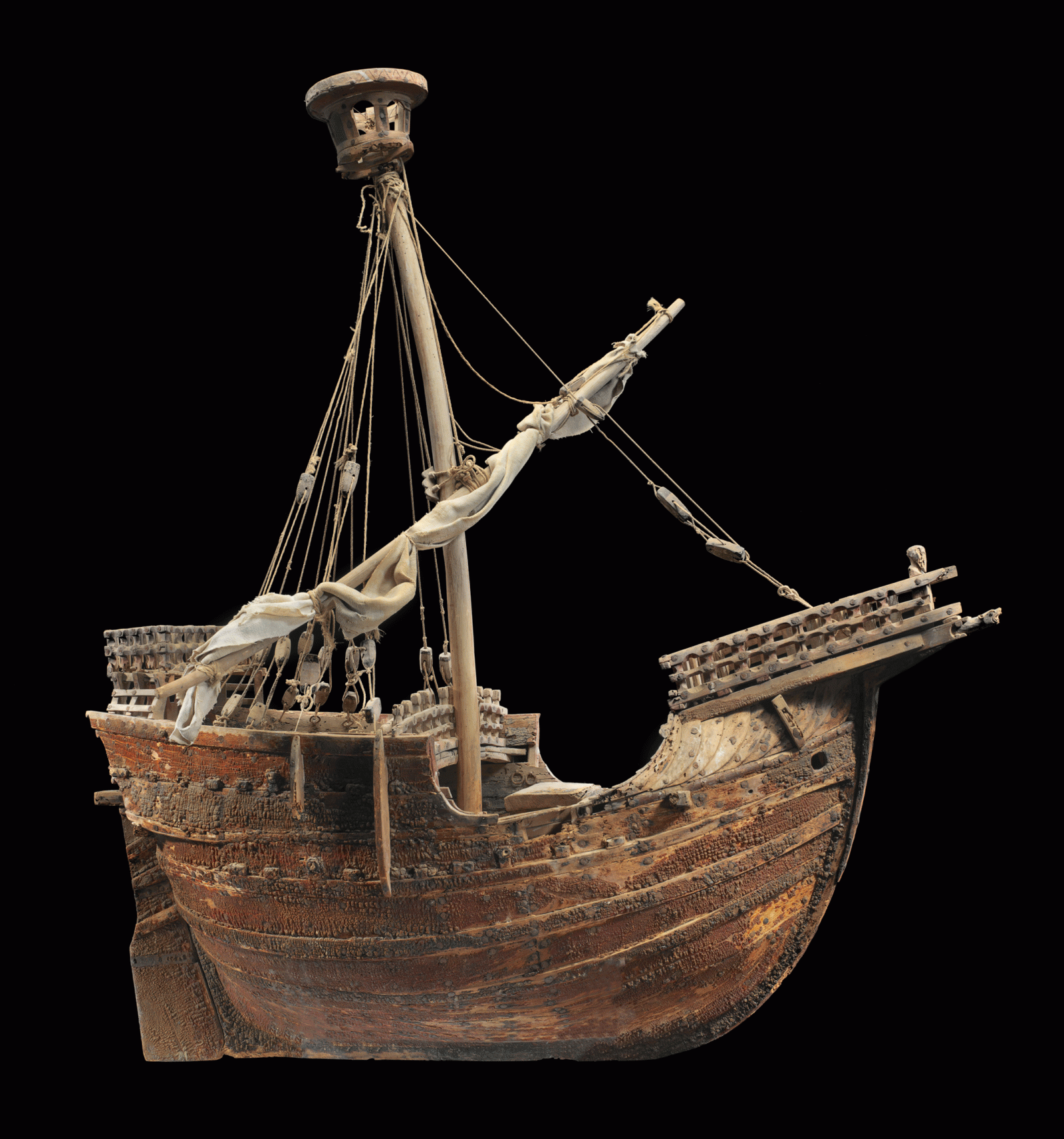Forschung
Ship Ex-Voto as Objects, Metaphors and Figures of Communality, from Antiquity to the Nineteenth Century
Hannah Baader
A canvas by the French artist Ulysse Butin, presented at the Salon in Paris in 1881, sentimentally evokes a maritime votive scenario showing a young lady offering the model of a sailing boat to a church in Normandy. Butin’s painting provides a starting point for a fragmentary history of Christian maritime ex-votos. Stretching back far before the nineteenth century, this history reflects the strong fears, anxieties and hopes that arise from seafaring, leading to specific religious practices, beliefs, and aesthetics.
The material practice of offering ship votives is literally documented in Christian contexts since the Early Middle Ages, taking up, transforming and substituting pagan, Graeco-Roman forms of religiosity. In a astonishing continuity, in the nineteenth and early twentieth centuries it was practiced along the coastlines of the European Atlantic and the Mediterranean world. It is also well documented for northern European countries such as Germany, Sweden, Finland, and Denmark. Ex-voto ships are still today displayed as part of church decoration in places such as Warnemünde and Dietenhagen in northern Germany and on the islands of the Baltic Sea. Many of them, surprisingly, are to be found in Protestant communities. Ship models can also be seen in several churches in France, in Italy, on the coast of Dalmatia, on Malta, and in the churches of Istanbul. Again, most of them date to the nineteenth and twentieth centuries, while others go back to the fifteenth to seventeenth centuries, among them the Vasceluzzo from Messina, venerated as a relic. The majority of maritime ex-votos are sailing boats, but several steamers are also preserved. Although there is a wide range of local documentation, we are still missing any overall research on the topic or any attempt at a more systematic approach. Maritime ship ex-votos are indeed the fragile documents of a long Mediterranean and Atlantic history, a history of longue durée, but nevertheless with significant changes and breaks. This long history might be a tacit history of the worlds of fishermen and seafarers with their specific forms of religiosity and community, but at the same time the history of early modern figures such as the merchant-Marchese Francesco Feroni, who was engaged in the slave trade and in 1693 constructed an elaborate chapel in SS. Annunziata in Florence, including a large ship model cast as a bronze relief. The project focuses on the status of maritime ex-votos in the form of ships as objects or things, on the metaphoricity of ships as bodies and figures of transfer, on the seriality of votive vessels, and on their capacity for creating communality.



